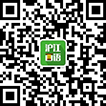2014考研英语一真题解析句段逻辑关系把握(跨考版)
2014年研究生入学考试已经结束,今年的考研英语真题,从命题形式来看,比较常规,没有出现让考生措手不及的情况反而让考生稍感轻松。
Part B
Directions:
The following paragraphs are given in a wrong order. For Questions 41-45, you are required to reorganize into a coherent text by choosing from the list A-G and filling them into the numbered boxes .Paragraphs A and E have been correctly placed. Mark your answers on the ANSWER SHEET.(10 points)
[A] Some archaeological sites have always been easily observable—for example, the Parthenon in Athens, Greece; the pyramids of Giza in Egypt; and the megaliths of Stonehenge in southern England. But these sites are exceptions to the norm .Most archaeological sites have been located by means of careful searching, while many others have been discovered by accident. Olduvai Gorge, fell into its deep valley in 1911.Thousands of Aztec artifacts came to light during the digging of the Mexico City subway in the 1970s.
[B] In another case, American archaeologists Rene million and George Cowgill spent years systematically mapping the entire city of Teotihuacan in the valley of Mexico near what is now Mexico City .at its peak around AD 600, this city was one of the largest human settlements in the word. The researchers mapped not only the city’s vast and ornate ceremonial areas, but also hundreds of simpler apartment complexes where common people lived.
[C] How do archaeologists know where to find what they are looking for when there is nothing visible on the surface of the ground? Typically, they survey and sample (make test excavations on) large areas of terrain to determine where excavation will yield useful information. Surveys and test samples have also become important for understanding the larger landscapes that contain archaeological sites.
[D] Surveys can cover a single large settlement or entire one case, many researchers working around the ancient Maya city of Copán, Honduras, have located hundreds of small rural village and individual dwellings by using aerial photographs and by making surveys on foot. The resulting settlement maps show how the distribution and density of the rural population around the city changed dramatically between AD500 and 850, when Copán collapsed.
[E] To find their sites, archaeologists today rely heavily on systematic survey methods and a variety of high-technology tools and techniques. Airbone technologies, such as different types of radar and photographic equipment carried by airplanes or spacecraft, allow archaeologists to learn about what lies beneath the ground without digging. Aerial surveys locate general areas of interest or larger buried features, such as ancient buildings or fields.
[F] Most archaeological sites, however, are discovered by archaeologists who have set out to look for them. Such searches can take years. British archaeologist Howard Carter knew that the tomb of the Egyptian pharaoh Tutankhamum existed from information found in other sites. Carter sifted through rubble in the Valley of the King for seven years before he located the tomb in 1922. In the late 1800s British archaeologist Sir Arthur Eyan combed antique dealers’ stores in Athens, Greece. He was searching for thing engraved seals attributed to the ancient Mycenaean culture that dominated Greece from the 1400s to 1200s BC. Evas’s interpretations of those engravings eventually led them to find the Minoan palace at Knossos on the island of Crete, in 1900.
[G] Ground surveys allow archaeologists to pinpoint the places where digs will be successful. Most ground surveys involve a lot of walking, looking for surface clues such as small fragments of pottery. They often include a certain amounts of digging to test for buried materials at selected points across a landscape. Archaeologists also may locate buried remains by using such technologies as ground radar, magnetic-field recording, and metal detector. Archaeologists commonly use computers to map sites and the landscapes around sites. Two and three-dimensional maps are helpful tools in planning excavations, illustrating how sites look, and presenting the results of archaeological research.
答案:41-45 CFGDB
解析:本文选自发表于2003年The International History Project的文章,题目为Archeology.
41. 此题是首段,所以需要找寻综述性的段落。其中A和E选项是给出的,所以只需从余下选项进行选择。B选项中有another,所以不会是第一段。E选项中代词their没有指代对象。F中有however,也不会是第一段。因此,只留下C和D选项。在C选项最后一句提到survey和test sample也很重要。而在D选项开头就提到了survey,而且整段都是,由此可看出D是对C的分述。所以C是首段。
42. 此题排在A项之后,所以内容上应该是衔接的。A项主要谈论的是大部分考古地点是通过仔细搜寻之后找到的,而其他的很多是被偶然发现的,接着举了一些例子。接下来在看各段首句的时候,发现F项中提到大部分考古地点是被考古学家们特意寻找发现的,和A提到的偶然发现意思相反,所以F正确。
43. 此题排在E项之后。E选项最后一句提到天空的搜寻,而在G选项的开头提到地面搜寻,正好形成对应,所以为正确答案。
44. 此时,只留下B和D选项。其中B选项开头提到了in another case,所以前面一段一定要提到in one case, 而D选项中有in one case.所以,D选项在前。
45. 根据上面的分析,此题只能选B。
那么,跨考教育英语教研室张老师认为,大家可按照以往的复习计划,按部就班地进行备考。具体就新题型来讲:
新题型重点是考察对阅读文章句与句、段与段之间逻辑关系的把握。新题型,出题形式有三种,分别是七选五,排序和标题匹配。其中标题匹配题目最简单,七选五难度适中,排序题相对难度较大。05年第一次出现新题型,考查"七选五",难度较大,平均分仅为4.1分,06年虽然依然考查"七选五",但是难度比上一年度略低,平均分为4.5分。07年考查的是难度最小的标题匹配题,平均分竟然达到6.2分。08、09年题型回归到"七选五",难度介于06年和07年所考查的新题型之间,命题比前几年更加成熟。10年考察了排序题,是排序题考察的第一年,难度偏高,除了没有给出首段之外,还需要考生排除干扰选项。11年再次考察排序题,但是难度大大降低,除了给出首段外,段落间还出现了明显的标志词。12年再次回归七选五,13年仍然考查七选五,对考生分析把握文章逻辑结构提出很大挑战。
新题型解题时离不开从上下文中寻找解题的线索,离不开学生重视对语篇关系的总结和归纳。在平时读英文文章时既要理解和掌握文章总体结构及思路,又要弄清上下文之间的逻辑关系。只要做到这些,无论新题型如何考,都能做到沉着应对。
猜你喜欢
- 来日留学不可不知的十大APP
小编根据自己的留学生活经验给大家推荐以下十款必备的App,几乎涵盖生活的方方面面,无论你是找兼职还是要网购,是阅览资讯还是观看视频,都能提供极大便利。
- 日本动漫游戏:学校的圣域
feng社第9作第1弹《彼女のセイイキ(她的圣域)》,而系列的第2弹《妹的圣域》已于2015年08月28日发售,系列第3弹《学校的圣域》在2016年11月发售。
- 山口百惠《いい日旅立ち》MV
《良日启程》是山口百惠的第24张单曲,也是其销量最高的单曲(总计销量达100万张)。同名主打歌由谷村新司作词作曲,日本国有铁路曾通过这首歌获得灵感,直接将这首歌的歌名作为旅行活动宣传语。
- 日本惊悚恐怖电影《裸体之夜:掠夺狂爱》
《裸体之夜2:掠夺狂爱》是由石井隆执导,竹中直人、佐藤宽子等领衔主演日本惊悚情色电影。该片讲述了主人公红次郎替年轻女孩加藤怜寻找叫“多绘”的救命恩人,结果踏入充满危机的“粉红”漩涡中。
- 秒变单身狗:哪些话不能对恋人说
恋爱初期总是美好而甜蜜的,然而两人长期处下来,就会发现对方的不足之处。生气起来口不择言,结果深深的伤害到两人的感情。这期给大家介绍一些对恋人可不能说的一些话。
- 日本礼仪:你真的会斟酒吗?
走进社会,我们不仅要在工作上努力努力再努力,还要一边学习一些社交礼仪。酒会作为一种常见的社交活动,学会其中的斟酒礼仪也是一门学问。今日,小编给大家整理了日本的斟酒礼仪供大家参考学习。
- 动漫日语脱口而出:痛痛飞走了
看动漫不学日语?那就太可惜啦!花花团小组节目《动漫日语每日一句》,每天教大家一句动漫中的实用台词,让你在看动漫的同时学到地道日语口语。爱动漫,爱生活!一起来练习口语吧!


